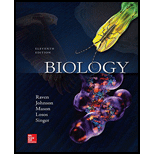
Introduction:
Fertilization is a process in which haploid male gamete (sperm) fuses with the haploid female gamete (egg or ovum) that result in the formation of diploid zygote. The zygote further develops into blastula, gastrula that later results in the formation of an embryo.
Answer to Problem 1U
Correct answer:
“The events which occur immediately after fertilization is egg activation, polyspermy defense, cytoplasm changes”. Therefore, option d. is correct.
Explanation of Solution
Reason for the correct statement:
Before fertilization, the egg remains in an inactive state until the sperm reach the egg and fertilization process takes place. The fusion of sperm with egg membrane trigger in the rush of
Option d. is given as “All of these occur after fertilization”.
As, “after fertilization the events that take place is egg activation, polyspermy defense and cytoplasm changes” is the right answer.
Hence, the option d. is correct.
Reasons for the incorrect statements:
Option a. is given as “Egg activation”.
The fusion of sperm with the egg membrane triggers the reactivation of egg metabolism is an event occur after fertilization. But after fertilization other events like polyspermy defense, cytoplasm change also occurs. So, it is a wrong answer.
Option b. is given as “Polyspermy defense”.
To prevent the polyspermy is an event that occurs after fertilization. But after fertilization other events like egg activation and change in cytoplasmic content also occurs. So, it is a wrong answer.
Option c. is given as “Cytoplasm changes”.
After fertilization, the egg changes its cytoplasmic content to prevent the polyspermy. But other events like egg activation and polyspermy defense also occurs. So, it is a wrong answer.
Hence, options a., b. and c. are incorrect.
The events that occur after fertilization are egg activation, polyspermy defense and cytoplasm changes.
Want to see more full solutions like this?
Chapter 53 Solutions
Biology
- How is a protein destined for the Endoplasmic Reticulum (ER), imported into the ER? Be concise.arrow_forwardFind out about the organisations and the movements aimed at the conservation of our natural resources. Eg Chipko movement and Greenpeace. Make a project report on such an organisation.arrow_forwardWhat are biofertilizers and mention the significancearrow_forward
- PCBs and River Otters: Otters in Washington State’s Green-Duwamish River have high levels of polychlorinated biphenyls (PCBs) in their livers. PCBs can bind to the estrogen receptors in animals and disrupt the endocrine system of these otters. The PCBs seem to increase the estrogen to androgen ratio, skewing the ratio toward too much estrogen. How would increased estrogen affect the river otter population? Based on your reading of the materials in this unit, what factors can affect fertility in humans? Explain how each of the factors affecting human fertility that you described can disrupt the human endocrine system to affect reproduction.arrow_forwardOther than oil and alcohol, are there other liquids you could compare to water (that are liquid at room temperature)? How is water unique compared to these other liquids? What follow-up experiment would you like to do, and how would you relate it to your life?arrow_forwardSelection of Traits What adaptations do scavengers have for locating and feeding on prey? What adaptations do predators have for capturing and consuming prey?arrow_forward
- Competition Between Species What natural processes limit populations from growing too large? What are some resources organisms can compete over in their natural habitat?arrow_forwardSpecies Interactions Explain how predators, prey and scavengers interact. Explain whether predators and scavengers are necessary or beneficial for an ecosystem.arrow_forwardmagine that you are conducting research on fruit type and seed dispersal. You submitted a paper to a peer-reviewed journal that addresses the factors that impact fruit type and seed dispersal mechanisms in plants of Central America. The editor of the journal communicates that your paper may be published if you make ‘minor revisions’ to the document. Describe two characteristics that you would expect in seeds that are dispersed by the wind. Contrast this with what you would expect for seeds that are gathered, buried or eaten by animals, and explain why they are different. (Editor’s note: Providing this information in your discussion will help readers to consider the significance of the research).arrow_forward
 Biology (MindTap Course List)BiologyISBN:9781337392938Author:Eldra Solomon, Charles Martin, Diana W. Martin, Linda R. BergPublisher:Cengage Learning
Biology (MindTap Course List)BiologyISBN:9781337392938Author:Eldra Solomon, Charles Martin, Diana W. Martin, Linda R. BergPublisher:Cengage Learning Concepts of BiologyBiologyISBN:9781938168116Author:Samantha Fowler, Rebecca Roush, James WisePublisher:OpenStax College
Concepts of BiologyBiologyISBN:9781938168116Author:Samantha Fowler, Rebecca Roush, James WisePublisher:OpenStax College
 Biology: The Dynamic Science (MindTap Course List)BiologyISBN:9781305389892Author:Peter J. Russell, Paul E. Hertz, Beverly McMillanPublisher:Cengage Learning
Biology: The Dynamic Science (MindTap Course List)BiologyISBN:9781305389892Author:Peter J. Russell, Paul E. Hertz, Beverly McMillanPublisher:Cengage Learning Medical Terminology for Health Professions, Spira...Health & NutritionISBN:9781305634350Author:Ann Ehrlich, Carol L. Schroeder, Laura Ehrlich, Katrina A. SchroederPublisher:Cengage Learning
Medical Terminology for Health Professions, Spira...Health & NutritionISBN:9781305634350Author:Ann Ehrlich, Carol L. Schroeder, Laura Ehrlich, Katrina A. SchroederPublisher:Cengage Learning





